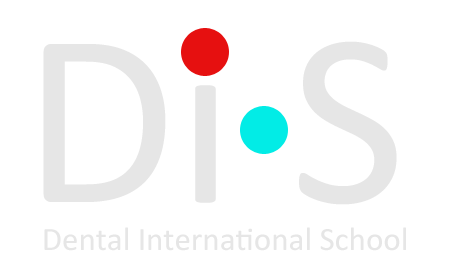Online-course
TMJ radiology and occlusion:
vertical dimension,
intra-articular disorders,
centric relation
vertical dimension,
intra-articular disorders,
centric relation
by Lukas Lassmann

- Lukas
Lassmann - 4
lessons - Duration:
6h 15min - There is no time limit for accessing the course.

Course program
4 ONLINE LESSONS.
TMJ radiology and occlusion: vertical dimension, intra-articular disorders, centric relation
TMJ radiology and occlusion: vertical dimension, intra-articular disorders, centric relation
- 1ABOUT COURSE
On the Lucas Lassman course, you will study in detail effective and accurate methods for diagnosing TMJ pathology.
During the training, you will learn:
– how does the vertical dimension of occlusion affect the development of TMJ pathologies
– radiological aspects of TMJ anatomy
– protocols for the diagnosis of TMJ pathologies by CBCT and MRI
– the role of the central ratio in the total rehabilitation of the oral cavity.- Lesson 1. Vertical dimension of occlusion (01:14:31)
- Lesson 2. TMJ radiology. Basic (54:35)
- Lesson 3. TMJ radiology. Advanced (01:43:40)
- Lesson 4. Clinical application of CR in prosthodontics and orthodontics (01:47:44)
Full course program
Lesson 1. Vertical dimension of occlusion
– How do we know when should we increase VDO and how much?
– Vertical dimension of occlusion (VDO)
– Increasing VOD in excessive tooth wear
– Full mouth reconstruction and TMD
– 1-1,3-2-3 relation in increasing VDO
– What is the dentoalveolar compensation
– The effect of raising VDO on the cervical spine and pain in the trigeminal nerve nuclei
– Cephalometric analysis of the cervical spine (analysis of intervertebral spaces and the cranio-cervical angle) and the position of the hyoid bone
– crucial for achieving muscle balance and making it possible to raise occlusion successfully
– Basic photo protocol for aesthetic planning
– Establishing the height of the deprogrammer platform using a modified DSD protocol
– DSD in patients with significant tooth abrasion (teeth not visible when patient smiles). How to establish the right aesthetics at the preliminary stage
– VDO checklist – if you follow this you can increase the VDO as much as you need.
– Vertical dimension of occlusion (VDO)
– Increasing VOD in excessive tooth wear
– Full mouth reconstruction and TMD
– 1-1,3-2-3 relation in increasing VDO
– What is the dentoalveolar compensation
– The effect of raising VDO on the cervical spine and pain in the trigeminal nerve nuclei
– Cephalometric analysis of the cervical spine (analysis of intervertebral spaces and the cranio-cervical angle) and the position of the hyoid bone
– crucial for achieving muscle balance and making it possible to raise occlusion successfully
– Basic photo protocol for aesthetic planning
– Establishing the height of the deprogrammer platform using a modified DSD protocol
– DSD in patients with significant tooth abrasion (teeth not visible when patient smiles). How to establish the right aesthetics at the preliminary stage
– VDO checklist – if you follow this you can increase the VDO as much as you need.
You can watch a five-minute clip of the lesson below.
Lesson 2. TMJ radiology. Basic
– Anamnesis vitae and morbie
– Two important steps before deciding to order radiographs
– Analysis of pantomographic images
– are 2D images suitable for the assessment of the temporomandibular joint?
– Analysis of condyle hypermobility on the basis of radiographs
– Structure of the temporomandibular joint in the context of radiology
– Assessment of the condyle position in the joint based on CBCT.
– Two important steps before deciding to order radiographs
– Analysis of pantomographic images
– are 2D images suitable for the assessment of the temporomandibular joint?
– Analysis of condyle hypermobility on the basis of radiographs
– Structure of the temporomandibular joint in the context of radiology
– Assessment of the condyle position in the joint based on CBCT.
You can watch a five-minute clip of the lesson below.
Lesson 3. TMJ radiology. Advanced
– Why position 4/7 did not fulfill its role?
– Cortical bone erosion on CBCT
– what is it and how to assess it?
– Joint degeneration in the CBCT image – arthritis vs arthrosis – a key difference from a clinical point of view
– Idiopathic condyle resorption – why does an open bite suddenly appear?
– Subcortical cysts, ankyloses and developmental defects in the CBCT image
– What to look for when analyzing cephalometry for respiratory disorders?
– What is the hyoid triangle and how to assess the pathology of the cervical vertebrae on cephalometry?
– Magnetic resonance imaging (MRI) – normal anatomy important from the point of view of TMD
– Displacement of the disc with and without reduction, lateral and posterior displacement of the disc – detailed analysis of MRI images
– Analysis of mobility in the joint based on MRI
– Joint effusion and double disc image – detailed MRI analysis
– Three words about ultrasound – why MRI is much better
– Stabilization of the condyle as seen by magnetic resonance imaging.
– Cortical bone erosion on CBCT
– what is it and how to assess it?
– Joint degeneration in the CBCT image – arthritis vs arthrosis – a key difference from a clinical point of view
– Idiopathic condyle resorption – why does an open bite suddenly appear?
– Subcortical cysts, ankyloses and developmental defects in the CBCT image
– What to look for when analyzing cephalometry for respiratory disorders?
– What is the hyoid triangle and how to assess the pathology of the cervical vertebrae on cephalometry?
– Magnetic resonance imaging (MRI) – normal anatomy important from the point of view of TMD
– Displacement of the disc with and without reduction, lateral and posterior displacement of the disc – detailed analysis of MRI images
– Analysis of mobility in the joint based on MRI
– Joint effusion and double disc image – detailed MRI analysis
– Three words about ultrasound – why MRI is much better
– Stabilization of the condyle as seen by magnetic resonance imaging.
You can watch a five-minute clip of the lesson below.
Lesson 4. Clinical application of CR in prosthodontics and orthodontics
– MRI and CBCT positioning of the condyle – when does it make sense?
– 4/7 position and rearmost position – why they were used and why they were stopped
– Centric slide – a physiological phenomenon or a big mistake?
– Constricted Chewing Pattern (CCP) and the “long centric”– Compression and decompression in TMJ – is the joint space important for us?
– Rotation / translation – are we actually separating these two movements?
– Defining the Central Relation – dental cabaret
– Adapted centric posture. How do I know when an intervention is needed?
– Muscle vectors of the stomatognathic system
– Establishing a centric relation (deprogrammers and maneuvers)
– Triple centric relation and determining the position of the articular fossa
– Forward position – splint reposition, functional orthodontics, apnea treatment
– Neuromuscular position – main principles and doubts
– What position should we choose and when should we look for it?
– Does an incorrect position in the joint guarantee TMD?
– 4/7 position and rearmost position – why they were used and why they were stopped
– Centric slide – a physiological phenomenon or a big mistake?
– Constricted Chewing Pattern (CCP) and the “long centric”– Compression and decompression in TMJ – is the joint space important for us?
– Rotation / translation – are we actually separating these two movements?
– Defining the Central Relation – dental cabaret
– Adapted centric posture. How do I know when an intervention is needed?
– Muscle vectors of the stomatognathic system
– Establishing a centric relation (deprogrammers and maneuvers)
– Triple centric relation and determining the position of the articular fossa
– Forward position – splint reposition, functional orthodontics, apnea treatment
– Neuromuscular position – main principles and doubts
– What position should we choose and when should we look for it?
– Does an incorrect position in the joint guarantee TMD?
You can watch a five-minute clip of the lesson below.
Lukas Lassmann
An international lecturer and founder of Master Level courses.
A member of the Polish Academy of Aesthetic Dentistry and the International Congress of Oral Implantologists.
Special offer
Lukas Lassmann
TMJ radiology and occlusion: vertical dimension, intra-articular disorders, centric relation
4 lessons
6h 15min
There is no time limit for accessing the course.
TMJ radiology and occlusion: vertical dimension, intra-articular disorders, centric relation
4 lessons
6h 15min
There is no time limit for accessing the course.
FAQ
After payment, you will receive an email with a receipt and an email with access to your personal account. If you cannot find the email with access, please email us at the address provided in the receipt. We will send you the access information in response to your email. Additionally, after payment, a website will open with instructions on how to log into your course account.
Access to the course is not limited by time or the number of views.
You can pay for the course only through the website, using a card from any bank, by clicking the "Buy" button.
If you have issues accessing your personal account, the course doesn't play, or any other questions arise, please contact our support team via the email provided in your payment receipt.
On the website, you can see excerpts from all the course lessons to verify their authenticity and usefulness. All payment transactions are processed through Stripe, which protects buyers. If any issues arise, you can contact the regulator and request a refund for the undelivered course. However, it is best to contact us via email first; we will help you gain access to the purchased course in any case.
